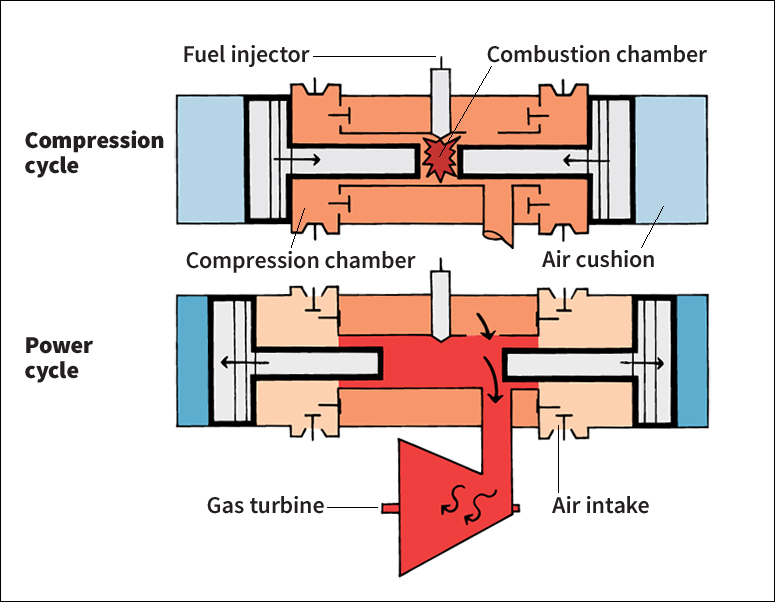Free-piston engine, sometimes called a gasifier, generates hot gases to do work, usually to run a turbine. It can burn nearly any liquid fuel, from kerosene to peanut oil. Most free-piston engines have one or more pairs of pistons mounted facing each other in a cylinder. These pistons work much the same way as the pistons in a gasoline or diesel engine, except they are not connected to a crankshaft.

Burning fuel makes the pistons bounce back and forth against cushions of air trapped in the ends of a compressor cylinder. As the pistons move toward each other, they compress air, raising it to a high temperature. When fuel is injected into this air, it explodes, drives the pistons apart, and produces hot gases. After the explosion, this air forces the gases through the turbine. Some of these engines have only one piston used as an air compressor or a pile driver. Pateras Pescara, a Spanish engineer, is credited with inventing the engine in the 1920’s.
